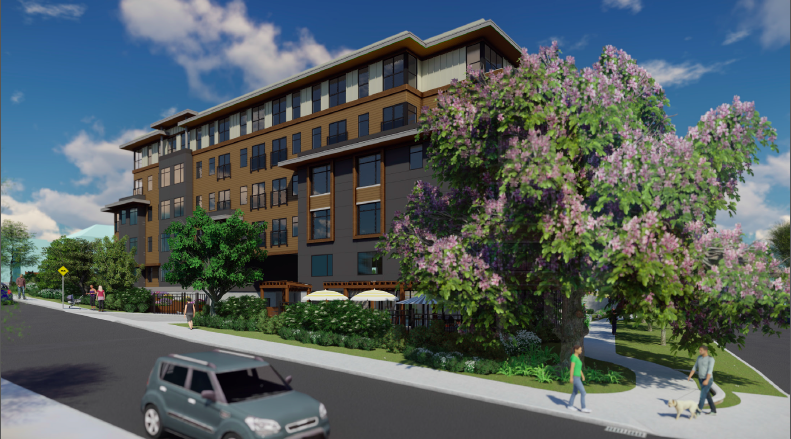
Getting Creative and Building an Inclusive Community
June 4, 2019 — Blog
Victoria is the metropolitan area on the southern tip of Vancouver Island in British Columbia, Canada with a population of approximately 400,000. It’s a beautiful island paradise with a high quality of life and easy access to nature. Because of the lifestyle attributes, strong and diverse economy and very low unemployment rate, the population of the region is growing. This growth is putting pressure on the existing housing stock – it’s the second most expensive place to rent in Canada with a rental vacancy rate of less than one percent. We’re hearing from the business community that there’s not enough housing for all the workers they need.
Victoria also struggles with homelessness. There’s not enough low-cost housing for people living on disability benefits or government assistance. Some people are homeless because they are poor. Others are homeless because they are poor and also have mental health and addictions challenges. Victoria is not alone – this is the case in every major North American city. To build inclusive communities we need to make sure that people have housing first, as a basic right.
Looking for conventional solutions to solve both the affordable workforce housing crunch and to end chronic homelessness wasn’t working. We had to get creative.
We came together as elected officials in the region through the Capital Regional District “Housing and Land Banking Program” and voted to borrow $30 million to build new affordable housing across the housing continuum for people who are homeless to people who are working. We found room for borrowing and debt servicing within our existing budget so that we did not need to raise property taxes. We used a basic, simple mechanism to lay the groundwork for what would become a very innovative approach to our housing crisis.
We added a “subject to” to our commitment. We’d only do it if the Provincial Government also came to the table. We worked hard with the Province, laying out clearly the innovative public private partnership that underpined the program. They added another $30 million.
But that wasn’t enough money to solve the problem. We needed more units, especially if we wanted to build enough for the number of people projected to be chronically homeless in our region over the next five years.
Our next stop was the federal government, which had recently launched a Housing Innovation Fund. If we partnered with private developers and non-profit housing providers and created “mixed market buildings”, the higher rents could subsidize the rents at Income Assistance rates and the buildings would not need any ongoing operating subsidy from government. This got the federal government’s attention.
Not only is this a good economic model, it’s also a good social model. All the new buildings will include 20 percent of units renting at $375 per month, 31 percent at rates set by the Canadian Mortgage and Housing Corporation and 49 percent at 85 to 95 percent of current rental rates. Mental health supports will be provided onsite for those who need them. What this means is that no-one is ghettoized and there’s room for people to move within their existing building if their economic situation changes. The model not only creates home, it also creates community.
The Federal Government saw the innovation in our approach and liked the public private partnership elements of the plan. In May 2018 they also contributed $30 million, bringing our total fund to $90 million. This $90 million of government investment will leverage another $400 million of private sector investment and build a total of 2000 affordable rental units in our region.
It’s only through coming together across sectors that we are able to address both the workforce housing shortage and chronic homelessness. This makes our communities stronger. In addition, it creates partnerships that may grow into other opportunities such as more creative financing for housing, or job-training and apprenticeships for people who will live in the homes being built. It’s been an inspiring journey putting the program together. It will be even more satisfying for all of us when 2000 people and their families are handed keys to their new homes over the next five years.